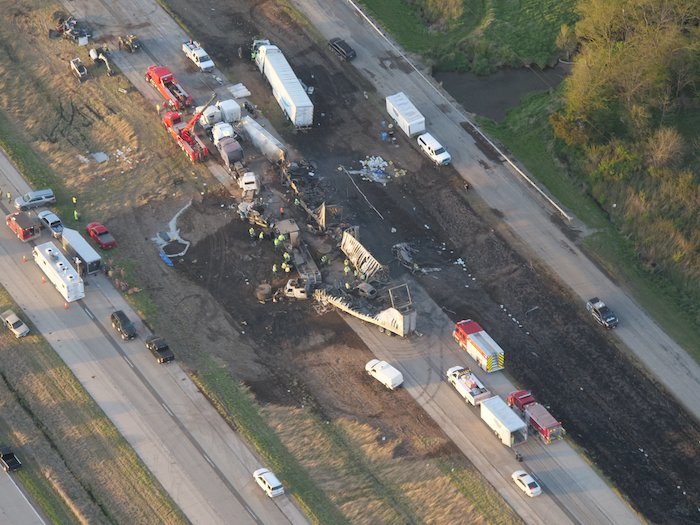On May 1, 2023, high winds blew soil from recently tilled fields across a 2-mile stretch of Interstate 55 in central Illinois, causing blackout-type visibility on the roads. Seven people died and another 37 were hurt in a 70-car pileup resulting from the dust storm.
“Tillage was the culprit, plain and simple,” Steve Groff, a No-Till Farmer Legend from Holtwood, Pa., posted on Twitter in response to the news. “I’ve been told by folks who were in the area that fields that were cover cropped and no-tilled had no dust blowing.”
Defending No-Till, Cover Crops
In the weeks that followed, heated debates broke out among proponents of cover crops and no-till, and conventional farmers defending tillage. John Phipps, commentator and former host of U.S. Farm Report, wrote an article for Farm Journal titled “The Surprising Solution to Prevent Deadly Dust Storms in the Future,” which argued against the role cover crops and no-till could have played in preventing the crash. He said the practices aren’t a viable solution to erosion because they’re “totally dependent on chemicals,” stratify nutrients and don’t pan out economically.
“The economics of tillage choices is a moving target, affected by yield differences (an argument I will not join) and input costs,” Phipps writes. “Right now, a $9 trip with a 30-year-old finisher beats a $50 herbicide application on our farm.”
But the economics of cover crops aren’t as black and white as Phipps declares. According to our 2023 Cover Crops Operational Practices Survey, farmers spent an average of $12.37 to terminate covers in 2022 (see p. 14). As West Union, Iowa, farmer Loran Steinlage points out, many farmers plan to spray a residual herbicide during the growing season, so most of that cost is absorbed in the yearly budget.
Phipps also doesn’t account for the cost of continuously destroying organic matter and soil structure by using tillage year after year. Cover crops’ living roots are essential to build soil structure, cycle nutrients and make soil more productive overall.
“Since crop yields are totally dependent on organic matter content of the soil, burning off the organic matter as tillage does is not a great plan for the future,” writes Ken Rulon, a no-tiller from Arcadia, Ind., in response to Phipps’ arguments.
Shifting Public Opinion
In the court of public opinion, tillage is becoming a hard sell — and a choice that opens the door for regulation and litigation. Scott Mowbray of Rolla, N.D., says farmers in Manitoba, Canada, used to burn cereal stubble, causing smoke to settle over the nearby city of Winnipeg and its 700,000 residents.
“For weeks at a time, the city would be clouded in smoke, air quality would plummet, breathing problems would be greatly exacerbated, even highway driving could be dangerous,” Mowbray writes. “Eventually the government passed straw/stubble burning restrictions where only certain areas could burn on certain days depending on wind direction. Very similar circumstances …”
Phipps is right on one point in his article — it’s very difficult to change someone’s mind, farmer or not. Change is scary, especially when someone has built a career on a certain way of farming. But is refusing to change worth the risk of lawsuits, more government regulation, erosion of precious topsoil, and most importantly, loss of lives? Putting aside assumptions about cover crops and no-till — and thinking about the big-picture impact of tillage — taking the first step of keeping soil in place with a cover crop’s living roots seems like a much less costly and insurmountable change.
Related Content
Could Cover Crops Have Prevented Deadly Illinois Dust Storm?






Post a comment
Report Abusive Comment